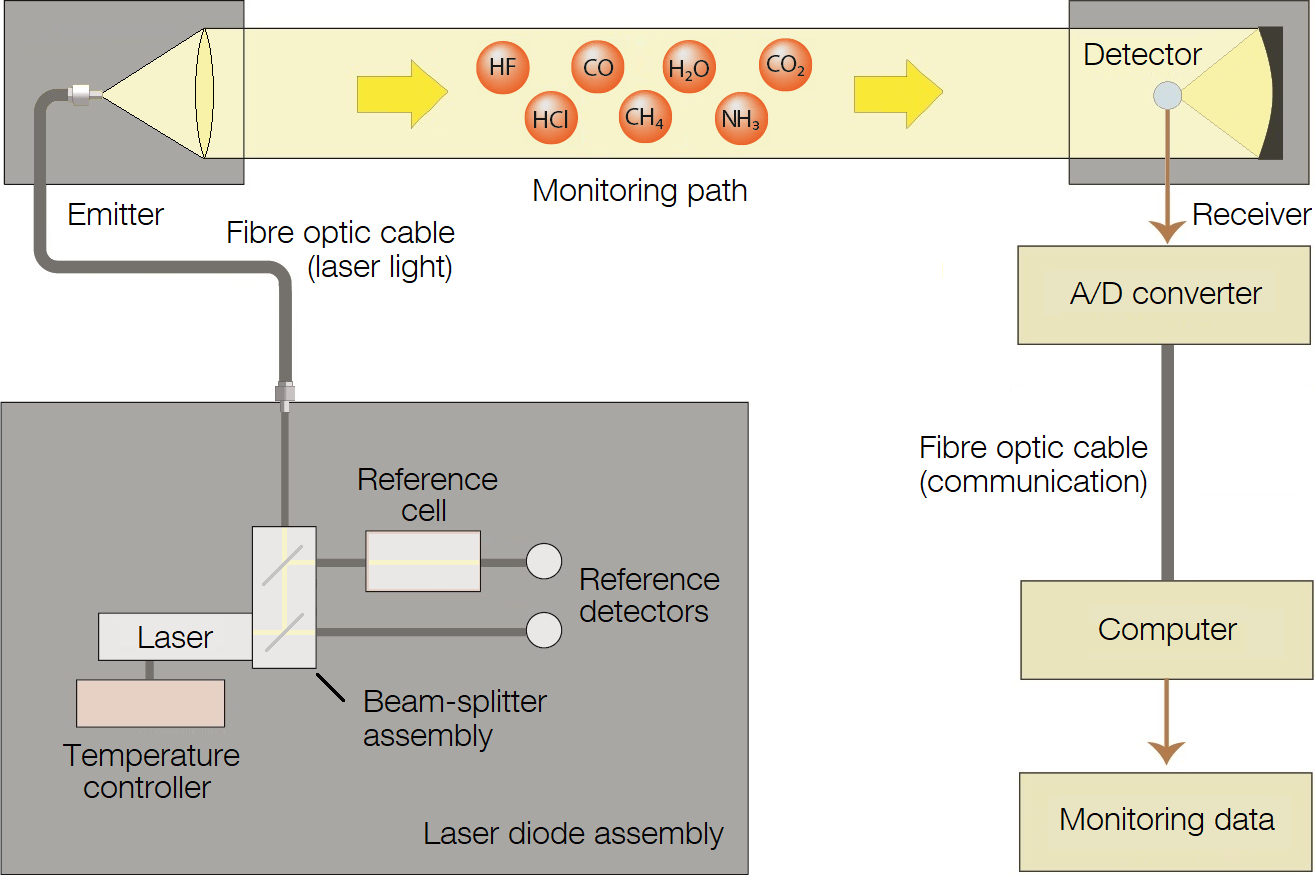TDL Technology (Tuneable Diode Laser)
HOW DOES THE TDL TECHNOLOGY WORK?
In a TDL-based gas analyser, laser light is emitted with a wavelength in the infrared range. The monitoring is made by rapidly sweeping the laser over a narrow wavelength range around the absorption line in a gas absorption spectrum.
The laser works continuously and is tunable, so the laser wavelength can be slightly adjusted. This is done by applying an electrical voltage across the laser diode. The voltage is carefully controlled so that during the sweep it varies according to a ramp function.
During measurement, the laser diode analyser creates an average value from a large number of sweeps. The measurement interval is typically 1-20 seconds and the sweep frequency is in the kilohertz range. After each measurement interval, the measured spectrum undergoes an evaluation procedure largely according to the DOAS principle.
The spectrum is compared by fitting with the least squares method against a known cross-section spectrum for the gas. This cross-section spectrum contains information about how large a known gas concentration's absorption is at different wavelengths. These calculations together with the length of the measurement path allow the concentration of the gas to be determined.

UV-DOAS, FTIR-DOAS OR TDL?
The choice between UV-DOAS, FTIR-DOAS and TDL depends on several criteria. The TDL technique cannot detect as many types of gases as the UV-DOAS and FTIR-DOAS techniques, but for the gases that can be monitored, the TDL technique often provides better monitoring performance, especially in terms of time resolution. A TDL-based monitoring system can often also be installed in more demanding environments. If only one or a few gas concentrations are to be monitored, it is also often economically advantageous to do so with a TDL system.

BLOGS ABOUT THE TDL TECHNOLOGY
Read our blog posts about the TDL technology and other related topics.
Inside the Gas Analyser – the Tuneable Diode Laser
What is the difference between a gas analyser and a gas monitor?

